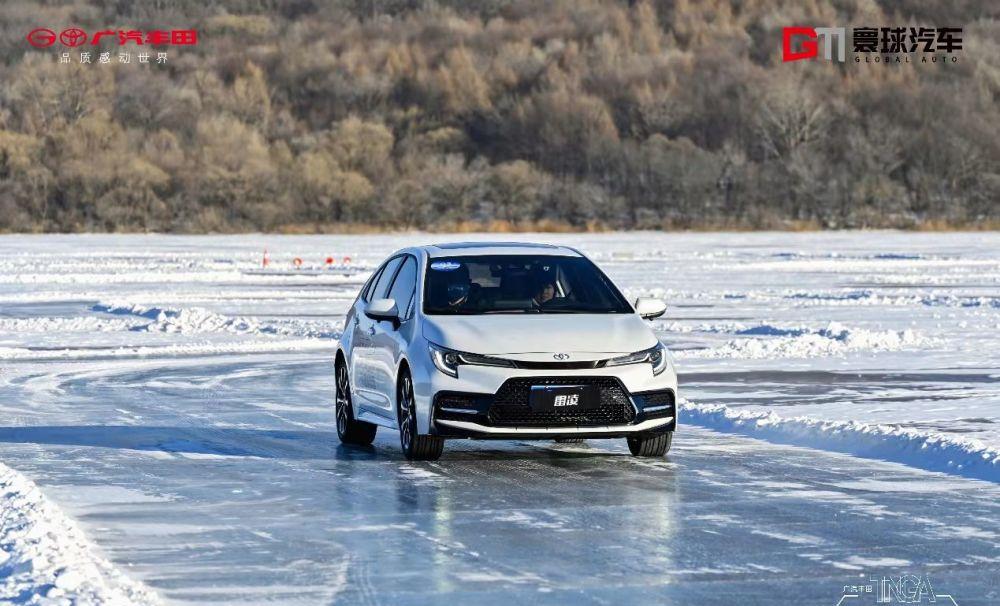
In people's traditional impression, the ordinary family cars of the Toyota brand are moderate, at least not related to the word "performance". But with the emergence of more and more new models based on the TNGA architecture, the "performance" of Toyota's family cars has gradually begun to be talked about.
Recently, the Changchun Station of the "GAC Toyota TNGA Driving Fun Experience Camp" jointly organized by Huanqiu Automobile Group and GAC Toyota was held at the Xingxing sentinel Reservoir. Driving on the ice in temperatures of minus 15 degrees Celsius was a harsh test of the performance of GAC Toyota's TNGA model.
TNGA, short for TOYOTA NEW GLOBE ARCHITECTURE, means Toyota's new global modular architecture. Nowadays, all car companies are talking about platforms and architecture, and Toyota's TNGA is a kind of automotive product building system that runs through research and development, procurement, and manufacturing, which is a general term for a complete set of technical processes. In simple terms, this architecture has a very high component common rate, so it can increase production efficiency, shorten development cycles, and improve technical standards.
According to Shen Zhiwei, a technical interpreter at GAC Toyota, TNGA has several significant effects on the driving performance of the vehicle: first, it reduces the layout of the vehicle's center of gravity and improves its stability; second, the use of a double wishbone independent rear suspension optimizes the position of the suspension arm, shock absorber and longitudinal arm to improve the stability and comfort of the body; third, the ACA active steering assist system and the high-precision rack and pinion electric power steering system achieve light steering and faster response; A series of L2-rated Toyota Intelligent Driver Assistance features improve the vehicle's driving safety.
In this test, the organizer arranged a number of test scenarios such as linear acceleration, emergency braking, S-shaped pile winding, U-shaped bend, "8" shaped pile winding, low-speed cornering, in-car noise, bumpy road surface, etc., and tested the performance level of GAC Toyota TNGA models from multiple dimensions such as power, control and tranquility. The models tested included gazc Toyota's full range of models, and the reporter mainly test-drove its family car Leiling (1.8L hybrid) and SUV model Veranda (PHEV version).
Driving on the ice, it is more appropriate to keep the speed below 50 km /h. In the initial stage, The acceleration of The Lightning was slightly insufficient, and the brake performance of the point brake was better. Winding around the pile and U-bends are very challenging to the vehicle's steering reaction. Due to the front-wheel drive structure of The Leiling, its rear wheels will lose grip when cornering and slip out of control, and then it is necessary to hit the steering wheel back to correct the body attitude. In the process of continuous "car rescue", Leiling's performance is quite stable and always remains in the "track". This may also be related to the fact that the test drive is equipped with snow tires.
The Veranda PHEV, also known as the Velanda High Performance Edition, is a medium-sized SUV equipped with a 2.5L plug-in hybrid system, the car is quite powerful, so the acceleration performance is good. The characteristics of high center of gravity and body weight, coupled with the effect of electronic four-wheel drive E-FOUR, make Veranda appear calm when driving on the ice, there are not many cases of wheel slippage, and the feedback given by the reverse direction is more direct and effective.
GAC Toyota Veranda ice driving
It is worth mentioning that The Willanda is equipped with Toyota's new fourth-generation THS II hybrid system, with an engine thermal efficiency of 41%, which is the latest technical system of Toyota Hybrid. At present, GAC Toyota offers three different dynamic dual-engine hybrid systems, namely the 1.8L hybrid installed in Ralink, the 2.0L hybrid mounted on the C-HR, and the 2.5L hybrid mounted on The Willanda, Camry, and Highlander.
GAC Toyota has switched the TNGA architecture of its products since 2017 and has now covered most of the models on sale. According to GAC Toyota, TNGA models have sold 1.6 million units in the past three years. According to the latest data released by GAC Toyota in 2021, sales in the whole year of 2021 reached 840,000 vehicles, an increase of 11% year-on-year. Among them, TNGA models sold 665,300 units, accounting for 79%. TNGA Dual Engine Hybrid Family accumulated 182,100 units in the whole year, an increase of 98% year-on-year.
From the power, control, NVH performance, intelligent interconnection and other levels of innovation, it can be said that the TNGA for the overall quality of GAC Toyota models is more significant. The improvement in handling has become the confidence of GAC Toyota models to dare to go on the ice to conduct ice and snow tests.
At present, GAC Toyota is also continuing to increase the launch of TNGA models. In 2021, GAC Toyota added a new Lingshang model in the field of cars. In January 2022, two new cars were launched in the field of SUVs, Fenglanda and Weisa, which increased the number of SUVs to 5 and achieved more market segment coverage. The reason for the high-density launch of new products is very straightforward, that is, GAC Toyota aims to achieve a sales target of 1 million vehicles in 2022, and the new product will be an important driving force for the completion of the target.